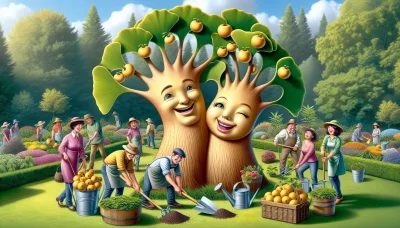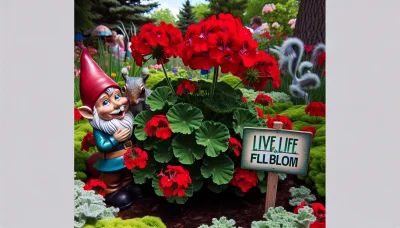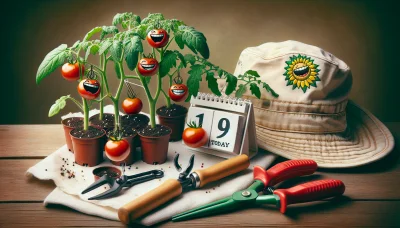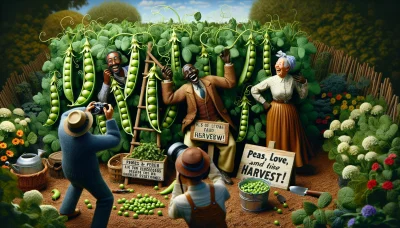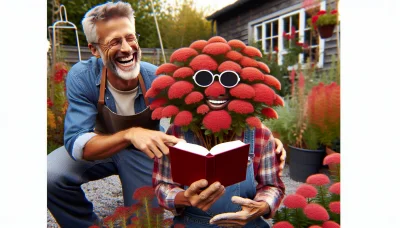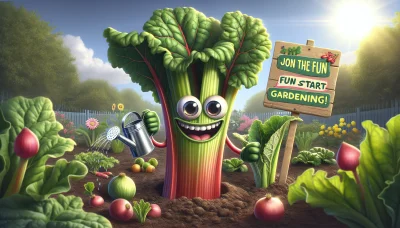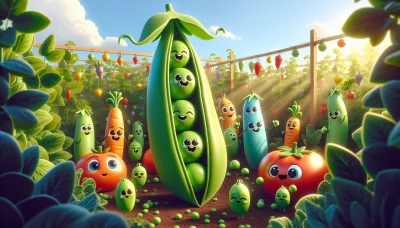How to grow kiwi fruit Quiz
Test Your Knowledge
Question of
How to Grow Kiwi Fruit: A Beginner's Guide
Kiwi fruit, known for its bright green flesh and unique flavor, has gained popularity not only as a delicious snack but also for its nutritional benefits. Rich in vitamins C and K, dietary fiber, and antioxidants, kiwi fruit offers a range of health benefits. Growing kiwi fruit can be a rewarding endeavor for gardeners of all levels. This guide will introduce you to the basics of cultivating kiwi fruit, from selecting the right variety for your climate to care and harvesting techniques. Whether you have a sprawling garden or a small space for container planting, you can enjoy the process of growing this nutritious and tasty fruit.
Choosing the Right Kiwi Variety
When it comes to selecting the perfect kiwi variety for your garden, understanding the distinctions between types is crucial. Kiwi fruits, known scientifically as Actinidia, come in several varieties, each with its own unique requirements and benefits. For colder climates, the Hardy Kiwi (Actinidia arguta) is an excellent choice, as it can withstand temperatures as low as -25 degrees Fahrenheit. For those in milder regions, the Golden Kiwi (Actinidia chinensis) offers a sweeter, more tropical flavor and requires a warmer climate to thrive. Urban gardeners with limited space might consider the Kiwi Berry, a miniature version of the traditional kiwi that can be grown on a balcony or in small garden spaces. Each variety has its own growth habits, flavor profiles, and nutritional benefits, making it important to choose the right type for your climate and gardening space.
Planting Your Kiwi Fruit
- Select a sunny, sheltered spot in your garden. Kiwi plants thrive in areas that receive full sun.
- Ensure the soil is well-drained and has a pH between 5.5 and 7.0. You can amend your soil with compost to improve its quality and drainage.
- Choose a male and female kiwi plant for pollination purposes. You need both for the female plant to produce fruit.
- Plant your kiwi in the late fall or early spring when the weather is cooler. This gives the plant time to establish itself before the hot summer months.
- Dig a hole that is twice as wide and just as deep as the root ball of your kiwi plant.
- Place the kiwi plant in the hole and fill it with a mix of soil and compost. Make sure the base of the plant is level with the ground surface.
- Water the kiwi plant thoroughly after planting. Keep the soil consistently moist, especially during the first growing season.
- Support your kiwi plant with a sturdy trellis or fence as it grows. Kiwi plants are vigorous climbers and require support to thrive.
- Mulch around the base of the plant to retain moisture, suppress weeds, and regulate soil temperature.
- Prune your kiwi plant in the winter to maintain its shape and promote fruit production. Remove any dead or diseased wood and thin out overcrowded areas.
Caring for Your Kiwi Plants
Kiwi plants, with their delicious fruits and attractive vines, are a great addition to any garden, but they require specific care to thrive. Watering is crucial, especially during dry periods; kiwis prefer their soil to be consistently moist but not waterlogged. When it comes to fertilizing, a balanced approach works best. Apply a general-purpose fertilizer in early spring to support growth and fruit development. Pruning is also essential for kiwi plants; not only does it help manage their size, but it also encourages the growth of fruiting wood. Prune in the winter when the plant is dormant, focusing on removing dead or overcrowded branches to improve air circulation and sunlight exposure. Following these care tips will help ensure your kiwi plants are healthy, vigorous, and productive.
Pest and Disease Management for Kiwi Plants
Kiwi plants can be affected by a variety of pests and diseases that threaten their health and productivity. Common pests include the kiwi fruit vine borer, which tunnels into the stems, and aphids that suck sap from the leaves, weakening the plant. Diseases such as bacterial canker and botrytis fruit rot also pose significant threats. Management of these issues involves a combination of cultural practices, such as maintaining proper sanitation by removing dead or infected plant material, ensuring good air circulation through pruning, and applying appropriate fungicides or insecticides. Implementing integrated pest management (IPM) strategies, which may include biological controls like introducing natural predators of the pests, can also be effective in maintaining the health of kiwi plants.
Harvesting and Storing Kiwi Fruit
Signs of Ripeness
- The fruit starts to soften slightly under gentle pressure.
- Change in the fruit's color, with green varieties becoming less green and brown varieties showing a deeper brown hue.
- A sweet, fragrant aroma at the stem end of the fruit.
- Slight give when squeezed gently, similar to a ripe peach.
Best Practices for Harvesting
- Harvest kiwi fruit before the first frost, typically in late autumn.
- Use pruning shears to cut the fruit from the vine to avoid damaging the vine and the fruit.
- Handle the fruit gently to prevent bruising.
- Harvest the fruit when it's mature but still firm if you plan to store it for a while.
Best Practices for Storing
- Store kiwi fruit at room temperature until ripe.
- Once ripe, refrigerate the fruit to extend its shelf life, keeping it in a plastic bag to retain moisture.
- For long-term storage, kiwi fruit can be kept in a refrigerator for up to four to six weeks.
- To ripen kiwi fruit more quickly, place them in a paper bag with an apple or banana, which emits ethylene gas that speeds up ripening.
Frequently Asked Questions About Growing Kiwi Fruit
| Question | Answer |
|---|---|
| What climate is best for growing kiwi fruit? | Kiwi fruit thrives in climates that have a warm summer and a mild winter. They are suitable for USDA zones 7-9. |
| Do kiwi plants need a lot of sunlight? | Yes, kiwi plants require full sun to produce fruit, ideally at least 6 to 8 hours of sunlight per day. |
| How much water do kiwi plants need? | Kiwi plants need regular watering, especially during dry periods. However, avoid waterlogging as this can lead to root rot. |
| Are kiwi plants self-pollinating? | Most kiwi varieties are dioecious, meaning you need both male and female plants to produce fruit. However, there are some self-pollinating varieties available. |
| How long does it take for a kiwi plant to bear fruit? | It can take 3 to 5 years for a kiwi plant to start bearing fruit after planting. |
| What type of soil is best for kiwi plants? | Kiwi plants prefer well-drained, slightly acidic soil with a pH between 5.5 and 6.5. |
| How to protect kiwi plants in winter? | In areas with harsh winters, it's important to provide mulch for root protection and, if possible, use frost cloths or move container plants indoors. |
| When is the best time to prune kiwi plants? | The best time to prune kiwi plants is in the winter while the plant is dormant, focusing on removing dead or overcrowded branches to improve sunlight exposure and air circulation. |



